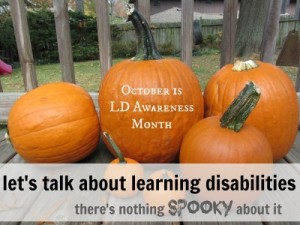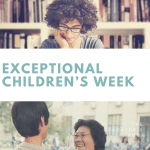[fusion_builder_container hundred_percent=”yes” overflow=”visible”][fusion_builder_row][fusion_builder_column type=”1_1″ background_position=”left top” background_color=”” border_size=”” border_color=”” border_style=”solid” spacing=”yes” background_image=”” background_repeat=”no-repeat” padding=”” margin_top=”0px” margin_bottom=”0px” class=”” id=”” animation_type=”” animation_speed=”0.3″ animation_direction=”left” hide_on_mobile=”no” center_content=”no” min_height=”none”]
On October 11, 1985, our then President Ronald Reagan signed Proclamation 5385 making the month National Learning Disabilities Month. We have come a long way, yet we still have so far to go in helping people understand what learning disabilities are and what they are not.
The President expressed it clearly and articulately:
…many Americans do not always find our language, numbers and symbols natural and logical. They exhibit learning disabilities. In a sense, they are most aware of the deep complexity of our mental processes, for they must struggle to make the connections that, for most of us, are effortless habits.
Awareness of learning disabilities is one of the most important advances in education in recent years. As more and more Americans become aware, our citizens with learning disabilities will have even greater opportunity to lead full and productive lives and to make a contribution to our society.
Twenty-eight years later, awareness remains key to helping students with learning disabilities learn to cope and live with the effects of the neurological disorder. According to the National Center for Learning Disabilities, 15-20% of the U.S. population has a learning disability and 2.4 million students are currently diagnosed with LD. In addition, very surprising statistical data and survey results conducted by the organization discovered:
- Over 66% of parents want more information about learning disabilities than schools currently provide.
- 43% of Americans, including teachers, wrongly believe that LD is correlated with IQ.
- 20% of students with LD drop out of high school vs. 8% of students in the general population.
- Among working-age adults with LD versus those without LD: 55% vs. 76% are employed; 6% vs. 3% of adults are unemployed; and 39% vs. 21% are not in the labor force partly because of lack of education.
While some educational outcomes for student with learning disabilities have shown improvements in recent years, overall they remain unacceptably low. With numbers like these, one can see why there is a need to not only talk about learning disabilities, but to keep talking until things get better for our most vulnerable learners.
Promote the Positive Side of LD
Make plans now to bring awareness in your classroom or community. One thing you can do is promote the positive side of LD. Introduce your students (general and special) to successful people who have overcome the effects that LD has upon their life. Start by visiting LDonline to read first person accounts by well-known and not-so-well-known people with LD who have led successful lives. By giving successful people with learning disabilities exposure in the classroom setting, you help to reduce the stereotyping and stigma associated with LD and demonstrates that you value every type of mind.
Tell us about some of your ideas for promoting LD awareness month.[/fusion_builder_column][/fusion_builder_row][/fusion_builder_container]



